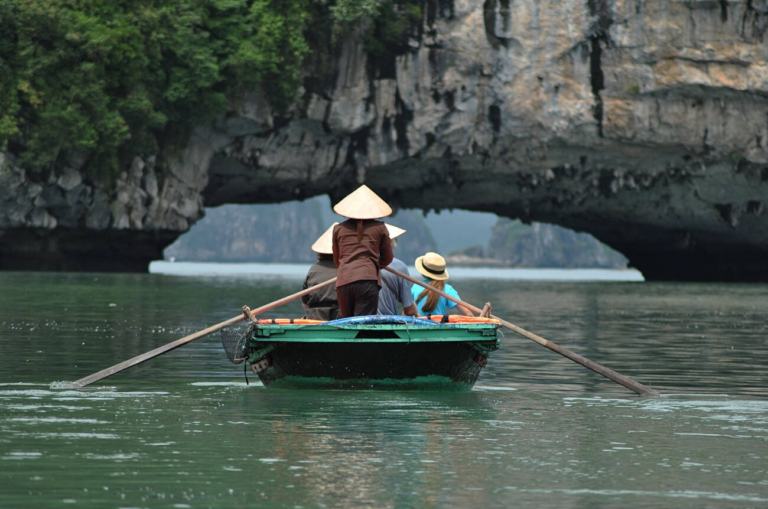The thrill of travel is unparalleled—stepping into unfamiliar streets, savoring local delicacies, and immersing oneself in cultures that broaden our perspectives. India, with its breathtaking landscapes and rich history, offers an endless canvas for explorers. Whether it’s Munnar’s misty slopes, Jaisalmer’s golden sands, or Mumbai’s bustling charm, every destination tells a story.
“Take only memories, leave only footprints.” – Chief Seattle
Yet, travel is not without consequences. As tourism flourishes, so do the strains on nature. Plastic-strewn beaches, choked hill stations, and overburdened heritage sites serve as stark reminders that the privilege of exploration carries an inherent responsibility.
How can we embrace the joy of travel without leaving a trail of destruction in our wake?
The Double-Edged Sword of Tourism
Tourism fuels economies, supports local artisans, and revives cultural traditions. Cities like Jaipur thrive on travelers seeking royal heritage, while coastal towns like Goa owe much of their livelihood to beach lovers. However, unchecked tourism takes a toll.
Ooty’s once-pristine lakes now suffer from an influx of plastic waste, and the tranquil shores of Goa are often littered with beer bottles and cigarette butts. Even historic marvels like the Taj Mahal battle the effects of overcrowding and pollution. Hill stations across India generate thousands of tons of waste annually, much of it plastic, which clogs rivers and disrupts ecosystems. The surge of microplastic pollution on Indian beaches has dramatically impacted marine life and local fishing communities.
Jaipur, Udaipur, and Agra—cities steeped in centuries of history—now struggle under the weight of mass tourism. Throngs of visitors often obscure the grandeur of Amer Fort, while the air surrounding Charminar in Hyderabad is thick with pollution from relentless traffic. Excessive footfall weakens these structures, necessitating frequent restoration efforts that cost millions. In Rajasthan, where water scarcity is a persistent issue, the hospitality industry consumes vast amounts of water—luxury hotels alone can use up to 1,500 liters per room per day, leaving locals struggling with shortages.
Coorg, known for its lush coffee plantations, faces a different challenge. Expanding resorts and hotels have led to deforestation, altering rainfall patterns, and disrupting agriculture. The Western Ghats, home to rare biodiversity, are being stripped to make way for new construction, threatening the region’s ecological balance. Farmers whose livelihoods depend on predictable climate patterns now face uncertainty as tourism reshapes their environment.
A Shift Towards Responsible Travel
A crucial step toward responsible tourism is choosing eco-friendly accommodations. Instead of large commercial hotels, travelers can opt for homestays and resorts that prioritize sustainability. In Coimbatore, I once stayed at a homestay where meals were prepared from homegrown produce, solar energy powered the lights, and rainwater harvesting ensured minimal wastage. The experience was not only fulfilling but also a lesson in mindful travel.
Transportation choices also play a vital role in sustainable tourism. While in Mumbai, I took the local train instead of a private cab. Sharing the journey with daily commuters gave me an authentic glimpse into the city’s rhythm while reducing my carbon footprint. Mumbai’s local trains transport over 7.5 million passengers a day, and this efficient system curbs pollution and decongests roads.
Small actions, such as reducing plastic consumption, also make a significant difference. While visiting Ahmedabad, I was impressed by how actively locals embraced the plastic ban. Many shopkeepers encouraged the use of cloth bags, and public water refill stations were easily accessible. Carrying a reusable water bottle, refusing plastic straws, and bringing cloth bags are small yet impactful steps toward reducing waste.
Respecting cultural heritage is another crucial aspect of responsible tourism. At Mysore Palace, I was disheartened to see visitors carving their names into the walls—a senseless act that contributes to the slow degradation of historical landmarks. Similar damage occurs at sites like the Ajanta Caves, where centuries-old paintings fade due to human interference. Many of India’s heritage sites require regular restoration, and every traveler must recognize their role in preserving these irreplaceable wonders.
Supporting local businesses is another way to travel responsibly while enjoying an authentic experience. In Pune, I had one of the best vada pavs from a street vendor—a simple yet flavorful delight that not only satisfied my hunger but also contributed to the local economy. Shopping for handcrafted souvenirs from artisans rather than mass-produced goods ensures that traditional skills continue to flourish and communities benefit directly from tourism.
A Personal Journey Toward Mindful Travel
One of my most transformative travel experiences was in Mahabaleshwar. Instead of choosing a conventional hotel, I opted for a farm stay, where sustainability was woven into every aspect of daily life. The hosts encouraged guests to participate in tree-planting initiatives, practice waste segregation, and embrace minimal electricity usage by relying on solar power. Meals were prepared using fresh, locally sourced ingredients, reinforcing the idea that responsible travel doesn’t mean sacrificing comfort—it means engaging with places in a way that leaves a positive impact.
Another journey that reshaped my perspective was a trip to the Andaman Islands. While enjoying the pristine beaches, I noticed a small eco-resort built entirely from bamboo and powered by solar energy. The resort’s philosophy centered around minimizing waste and respecting nature. Visitors were encouraged to participate in beach clean-ups and use biodegradable products, proving that sustainable travel is possible even in the most remote corners of the country.
In Ladakh, I encountered another inspiring example of sustainable tourism. Due to the fragile ecosystem of the high-altitude desert, many local guesthouses adopt eco-friendly practices such as composting toilets and solar-powered heating. The people of Ladakh, deeply connected to their land, understand the need for conservation. Their efforts to balance tourism and environmental preservation serve as a model for other regions.
Towards a Greener Tomorrow
Travel is a privilege, and with it comes the responsibility to protect and preserve the places we visit. India’s beauty lies in its diversity, from the Himalayan peaks to the sun-kissed coasts, from the dense forests of the Northeast to the cultural heartlands of the South. As travelers, we hold the power to ensure that our explorations do not come at the cost of environmental degradation.
By making conscious choices—avoiding plastic, choosing eco-friendly stays, using public transport, and respecting local traditions—we can redefine tourism as a force for good. The next time you set out on a journey, consider the impact of your footprints. Travel is not just about the places we see but about the legacy we leave behind.
Let’s wander wisely, ensuring that future generations can marvel at the same wonders that captivate us today. Let’s make travel a journey of care, respect, and lasting positive change.
By: Prakhar Bansal
Write and Win: Participate in Creative writing Contest & International Essay Contest and win fabulous prizes.


